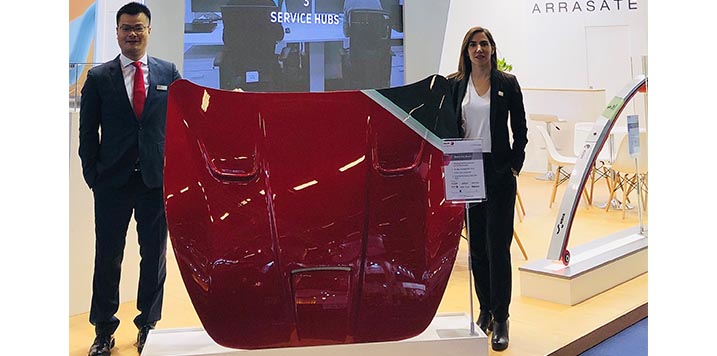 12 February, 2020
12 February, 2020Fagor Arrasate has carried out a complete characterization (injection, compression, permeability phase) of the CRTM process and of the materials (resin, fiber and binder) in order to know and define the key parameters, the actual cycle times and the necessary equipment for the manufacture of automotive parts in series.
The study conducted by Fagor Arrasate demonstrates that parts manufactured using CRTM have a manufacturing cost 10-15% lower than the cost of parts manufactured by HP-RTM and in the same line. At the same time, parts manufactured by CRTM are 20-30% cheaper than those made in prepreg by autoclave process.
The search for the reduction of the emission of C02 in transport depends largely on the lightening measures, since the new transmission systems and the energy storage method penalize the car's weight. The widespread use of composites with carbon fiber reinforced polymers (CFRP) in cars and commercial vehicles is one of the most appropriate solutions, since they can reduce up to 70% of the weight and the ability to dissipate impact energy is 5 times greater than that of metals.
One of the most promising alternatives to reduce filling times and increase the fiber content of the CFRP is the process called Compression Resin Transfer Molding (CRTM). CRTM allows fixing the processes and making room for a faster chemical reaction, shorter injection times, a shorter reaction time and a faster response time in the molds.
In CRTM, contrary to what happens in conventional RTM, the mold is partially closed during the injection phase. The gap that is generated between the preform and the upper part of the mold has a very high permeability, which generates a preferential flow path, and the resin ends up covering the entire surface of the piece. Once the desired amount of resin has been injected, the injection ports are closed and the mold begins to close until the desired final thickness is achieved (and therefore the required fiber content).
During this total closing of the mold the resin is forced to impregnate the preform. Thus, instead of flowing through the preform in the plane as in the RTM, the flow is perpendicular to the thickness. This is the main reason why impregnation times of minutes can be achieved compared to the tens of minutes of the conventional RTM.
The results of this development will be presented at the next edition of the JEC World fair that will take place in Paris from May 12 to 14.
Subscribe to our newsletter. Just insert your e-mail and you will receive the latest news.